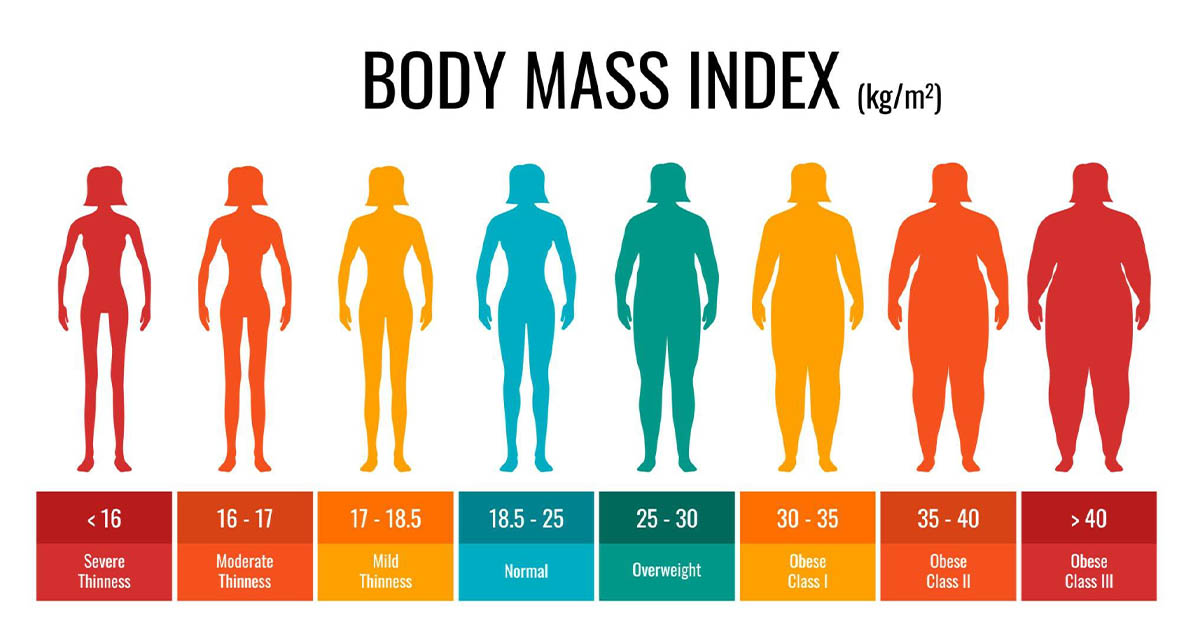Body Mass Index (BMI) is a commonly used metric to assess an individual’s body composition and overall health. It is a simple formula that takes into account a person’s weight and height. However, a question that often arises is whether BMI should be calculated differently for males and females. In this blog post, we will explore the origins of BMI, its limitations, and whether there is a need to adjust its calculation based on gender.
Table of Contents
ToggleUnderstanding BMI

BMI is a measure that relates your weight to your height. It is calculated using the following formula:
BMI = weight (kg) / (height (m) * height (m))
The result of this calculation falls into various categories, such as underweight, normal weight, overweight, and obesity. These categories are typically associated with certain health risks. However, BMI has its roots in a simple, one-size-fits-all approach.
The History of BMI
The concept of BMI was developed in the early 19th century by Adolphe Quetelet, a Belgian astronomer, mathematician, and sociologist. Initially, it was not intended to be a measure of individual health but rather a tool to study populations and assess the prevalence of obesity. Quetelet’s formula for BMI was the same for both men and women, as it was primarily used to analyze large datasets of population health.
The Limitations of BMI
While BMI is a useful tool for population-level health assessments, it has several limitations when applied to individuals. One of the most significant criticisms of BMI is that it does not take into account factors such as muscle mass, bone density, and body composition. Here are some key limitations of BMI:
1. Ignores Body Composition
BMI does not distinguish between muscle and fat. Two individuals with the same BMI may have vastly different body compositions—one might have a higher muscle mass, while the other may have a higher percentage of body fat.
2. Gender and Age Are Overlooked
BMI calculations do not consider gender or age, which can be important factors in assessing health. For example, as people age, they tend to lose muscle mass and gain fat, which may not be reflected accurately in their BMI.
3. Does Not Account for Waist Circumference
Waist circumference is another critical factor for assessing health, as excess fat around the abdomen can be more detrimental to health than fat in other areas of the body. BMI does not account for waist circumference.
Do We Need Gender-Specific BMI?

Given the limitations of BMI, it is reasonable to ask whether it should be calculated differently for males and females. Some argue that it may be more accurate to have separate BMI calculations for men and women because they tend to have different body compositions. Here are some considerations:
1. Gender-Specific Cut-Offs
One approach to addressing the gender differences in body composition is to establish separate BMI cut-off points for males and females. This would mean that what is considered “normal” or “healthy” BMI levels would be different for men and women.
2. The Athlete’s Dilemma
Athletes, particularly female athletes, often have higher levels of muscle mass and lower levels of body fat. As a result, they may fall into higher BMI categories, even though they are exceptionally fit and healthy. Gender-specific BMI calculations could potentially address this issue.
3. Health Implications
There is evidence to suggest that the health risks associated with excess body fat may differ between males and females. For example, women tend to store more fat subcutaneously (under the skin), while men tend to store more fat viscerally (around organs). Visceral fat is associated with a higher risk of certain health conditions, including heart disease. Gender-specific BMI calculations could account for these differences.
The Counterarguments
On the other hand, many experts argue against the idea of gender-specific BMI calculations. They contend that BMI is a simple and universally applicable tool that serves its purpose well, despite its limitations. Here are some counterarguments:
1. Complexity
Introducing gender-specific BMI calculations could complicate matters for both healthcare professionals and the general public. It might be challenging to educate people about the differences and ensure consistent use.
2. Individual Variation
Even within each gender, there is a wide range of body compositions. Trying to create separate BMI calculations for various body types and structures could be impractical and lead to confusion.
3. Better Measures Available
Some argue that instead of modifying BMI, we should focus on using more accurate measures of health, such as waist-to-hip ratio, body fat percentage, or comprehensive health assessments that consider a person’s overall well-being.
Frequently Asked Questions (FAQ) About BMI and Weight
How do I calculate my BMI?
BMI (Body Mass Index) is calculated by dividing your weight in kilograms by the square of your height in meters. The formula is BMI = weight (kg) / (height (m) * height (m)). Alternatively, you can use online BMI calculators or mobile apps to determine your BMI easily.
What is the correct BMI for my age?
BMI is typically not age-specific. The same BMI categories apply to adults of all ages. However, BMI norms may differ for children and adolescents, as growth and development play a significant role in these age groups.
What’s the ideal weight for my height?
The ideal weight for your height can vary depending on factors like body composition, muscle mass, and overall health. BMI can give you a general idea of whether your weight is within a healthy range, but it’s essential to consider other factors for a comprehensive assessment.
What is the ideal weight for a 5’3″ female in KG?
The ideal weight for a 5’3″ female can vary, but a healthy BMI for this height typically falls within the range of 18.5 to 24.9. You can calculate your specific ideal weight within this BMI range using the BMI formula mentioned in question 1.
How much should a 5’4″ female weigh?
A healthy weight for a 5’4″ female would generally fall within the BMI range of 18.5 to 24.9. To find the exact weight, you can calculate it using the BMI formula or use online tools.
How much should a 5’1″ female weigh?
For a 5’1″ female, a healthy weight typically falls within the BMI range of 18.5 to 24.9. To determine the exact weight, you can use the BMI formula or online calculators.
What is underweight for a 5’1″ female?
A BMI below 18.5 is considered underweight for adults, regardless of height. For a 5’1″ female, this would indicate being underweight if their weight falls below the corresponding BMI threshold.
What is a normal BMI for a woman?
A normal BMI range for adults of all genders, including women, is generally considered to be 18.5 to 24.9. Falling within this range suggests a healthy weight relative to height.
What is a healthy BMI for a 5’1″ female?
A healthy BMI for a 5’1″ female would typically be within the range of 18.5 to 24.9, which is the same as for individuals of other heights. Staying within this range is generally associated with better health outcomes.
What is the ideal weight for a 5.1″ female in KG?
The ideal weight for a 5’1″ female in kilograms can be calculated by determining the BMI range of 18.5 to 24.9 for this height and then using the BMI formula to find the corresponding weight range. Online calculators can also provide this information.
What is a normal BMI?
A normal BMI typically falls within the range of 18.5 to 24.9 for adults. This range is considered healthy and associated with a lower risk of health problems related to weight.
How can a woman lower her BMI?
Lowering BMI involves achieving a healthier weight through a combination of balanced nutrition and increased physical activity. Consult with a healthcare professional or a registered dietitian for personalized guidance on diet and exercise plans that suit your individual needs and goals. Remember that gradual, sustainable changes are more effective and safe in the long term.
Conclusion
In conclusion, the question of whether Is BMI Calculated Differently for Males and Females is a topic of debate in the field of health and nutrition. While BMI is a useful tool for population-level assessments, it has limitations when applied to individuals. Gender-specific BMI calculations could potentially address some of these limitations, but they also raise concerns about complexity and individual variation. Ultimately, whether gender-specific BMI is necessary may depend on the specific goals of health assessments and the availability of more accurate measures. As the field of health and nutrition continues to evolve, it’s essential to consider the strengths and weaknesses of existing tools and explore ways to improve our understanding of individual health.


